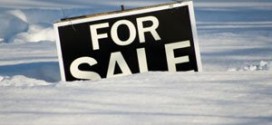Freddie Mac’s economists expect the balance of the year to be a hectic one as housing markets are likely to see increasing interest rate volatility for the remainder of the year and consumers try to anticipate the Federal Reserve’s timing around rising short term interest rates. Home buyers may encounter “bouts of affordability shock” if rates rise suddenly.
With tight for-sale inventories still prevalent deep into the buying season, house price growth continues to beat expectations. Freddie’s economic team expects 2015 house price growth to be 4.5 percent, revising their forecast up from 4.0 percent last month.
Due to strong refinance activity through the first four months of the year, the forecast for 2015 mortgage originations has been revised up to $1,350 billion. Due to low mortgage rates and strong refinance volume, the forecast for the refinance share of originations in 2015 has been boosted to 43 percent.
“While the comparison of the 2013 Taper Talk to the recent jump in rates over the past few weeks is striking in their timing and movement, not all economic conditions are the same. The labor market has added 5 million additional jobs, the unemployment rate is significantly lower and housing markets are generally in much better condition than two years ago. For the remainder of this year, we’re likely to continue to see these mortgage rate swings as market participants try to anticipate Fed timing around rising short term interest rates. Unfortunately, perspective homebuyers may experience bouts of affordability shock in many housing markets. So far it’s been low mortgage rates that have helped to keep homebuyer affordability strong in the face of rising house prices, while income growth remains stagnant,” said Len Kiefer, Deputy Chief Economist, Freddie Mac.
By driving down homebuyer affordability, rising rates are likely to slow home sales and new home construction. Overall economic growth will likely also slow due to a slower recovery in residential construction and business investment. Homebuyer affordability calculations are highly interest rate sensitive, said Freddie’s forecast.
If interest rates were to rise to 5 percent without any change in incomes and house prices, only 108 out of 163 metros would be affordable. The graphic below illustrates how a traditional affordability metric (no more than 25 percent of gross monthly income going to monthly
Principal and Interest payments) responds to rising interest rates. For a loan of $200,000 financed with a 30-year fixed rate mortgage and a household earning $50,000 per year, the purchase becomes unaffordable at a mortgage rate of about 4.74 percent, the economists said.
 RealEstateEconomyWatch.com Insight and Intelligence on Residential Real Estate
RealEstateEconomyWatch.com Insight and Intelligence on Residential Real Estate


One comment
Pingback: Freddie Forecasts Higher Prices, Volatile Rates | Belair Realty